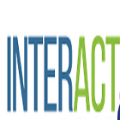Comprehending and exploring large and complex data is becoming increasingly important for users in a wide range of application domains. Still, non-experts in visual data analysis often have problems with correctly reading and interpreting information from visualizations that are new to them. To support novices in learning how to use new digital technologies, the concept of onboarding has been successfully applied in other fields and first approaches also exist in the visualization domain. However, empirical evidence on the effectiveness of such approaches is scarce. Therefore, we conducted 3 studies: 1) Firstly, we explored the effect of vis onboarding, using an interactive step-by-step guide, on user performance for four increasingly complex visualization techniques. We performed a between-subject experiment with 596 participants in total. The results showed that there are no significant differences between the answer correctness of the questions with and without onboarding. Furthermore, participants commented that for highly familiar visualization types no onboarding is needed. 2) Second, we performed another study with MTurk workers to assess if there is a difference in user performances on different onboarding types: step-by-step, scrollytelling tutorial, and video tutorial. The study revealed that the video tutorial was ranked as the most positive on average, based on sentiment analysis, followed by the scrollytelling tutorial and the interactive step-by-step guide. 3) For our third study with students, we gathered data on users' experience in using an in-situ scrollytelling for the VA tool. The results showed that they preferred scrollytelling over the tutorial integrated into the landing page. In summary, the in-situ scrollytelling approach works well for visualization onboarding and a video tutorial can help to introduce interaction techniques.
翻译:对广泛应用领域的用户来说,理解和探索大型和复杂数据越来越重要。不过,非视觉数据分析专家往往在正确阅读和解释来自新视觉化的信息方面有问题。为了支持学习如何使用新的数字技术的新点,登机概念已在其他领域得到成功应用,在可视化领域也存在第一种方法。然而,关于这类方法有效性的经验证据很少。因此,我们进行了3项研究:1)首先,我们利用互动式一步步指南探讨了登机对四个日益复杂的综合视觉化技术用户性能的影响。我们与596名参与者进行了一个主题间实验。结果显示,问题答案的正确性和不登机的答案之间没有重大差异。此外,与会者评论说,对于非常熟悉的视觉化类型,需要不登机。第二,我们与MTurk工人进行了另一项研究,以评估不同登机类型用户性表现的差别:一步步、滚动式滚动式指南、最精细的滚动的滚动结果,我们用一个视频的脚踏式脚踏式的脚踏式的脚踏式手法,我们用脚踏式的脚踏式的脚踏式的脚踏式的脚踏式的脚踏式研究,在机的脚踏式的脚踏式的脚踏式分析中学习上了。



